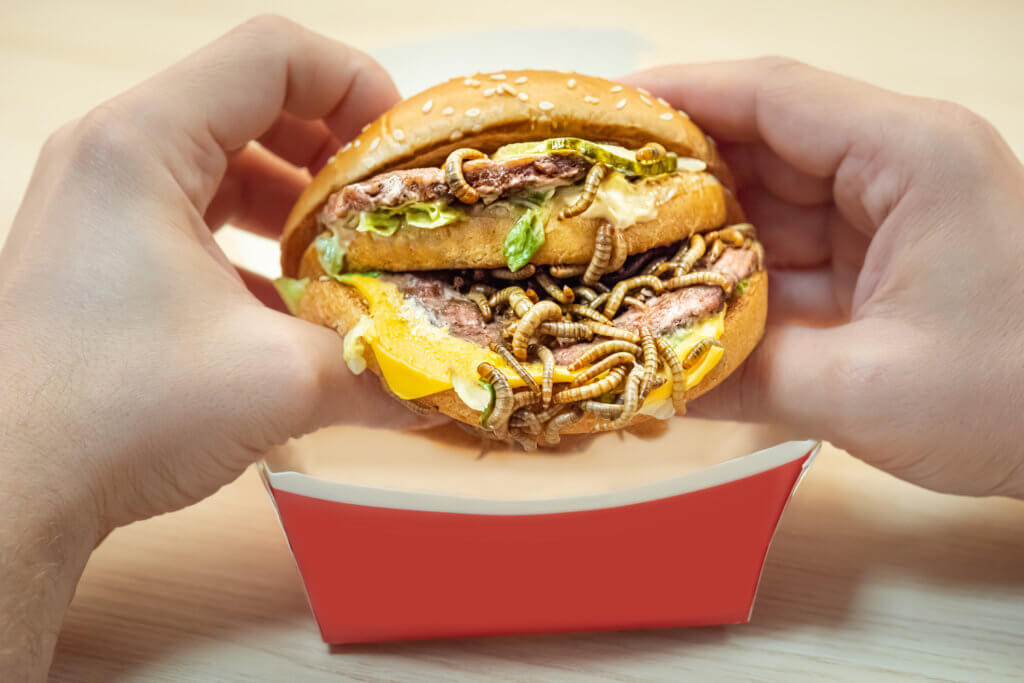What’s tasty, abundant, and high in protein and vitamins? Bugs! Eating bugs even has a fancy name: entomophagy. This is not a new concept. Bugs feed about 2 billion people every day. Some think they also hold promise for food security and sustainability.
Why eat bugs?

You may not realize people have been eating insects for centuries. But in some parts of the world, opinions about insects as food vary. It’s not quite as accepted in the United State (the ick factor!). In other parts of the world, it’s a standard operating procedure. In addition to the ick factor, around 10,000 BCE, people began farming crops and livestock. At that point, insects became pests that could destroy their food, rather than the food itself. For good reason. Think about if you grow grapes for a living right now. How would you perceive the spotted lanternfly – as a threat to your livelihood or as a nice appetizer?
That doesn’t mean bugs aren’t a good source of protein. Around 1900 different insect species are eaten around the world. In many places, people don’t eat these insects out of necessity. Instead, they eat them because they taste good!
Most popular edible insects:

Entomophagy is more common in tropical climates. That’s probably because the insects there are larger and tend to swarm. This makes them easier to gather and more filling. In colder climates, where there are fewer insects, it’s harder to consider them a prominent food source. But in places where the commonly eaten insects are abundant, they are considered more sustainable than some of our current food sources. For example, crickets use much less land than cattle. It takes 400 square meters of land to get one kilogram of beef, but only 30 square meters of land to get one kilogram of crickets. Crickets also use much less water. It takes 2,200 liters of water to get 100 grams of beef, and about 2,000 times less to get 100 grams of crickets. Granted, you get more out of one cow than you would one cricket but think about how many crickets it would take to equal a whole cow. There are pros and cons to both which is why eating bugs is not 100% accepted today. People know cheeseburgers and steaks. They don’t necessarily know cricket protein balls.
If whole bugs aren’t whetting your appetite, you can start with adding cricket or mealworm flour to your next batch of cookies – without the legs! It’s a nice first step and it’s lower in carbohydrates and higher in protein, which we all know is healthier.
What bugs should you not eat?
Just like some of the plants that grow on this earth could be harmful if ingested, there are bugs you should also NOT eat. Stay away from slugs and snails since they can feed on poisonous mushrooms. Also, don’t venture into eating scorpions or tarantulas. These are eaten in Mexico and elsewhere, and they’re collected by folks who know how to do it. We are not among these people. Steer clear. While you can eat wasps, collecting them could be a dangerous activity for obvious reasons. Also, stay away from caterpillars. Caterpillars are widely eaten worldwide, but this is a case of knowing your critter. You definitely want to stay away from colorful, hairy ones. Eat the wrong kind and the side effects range from upset stomach to extreme pain to death. Not worth it.
Bug recipes!
Now that you know why eating bugs can be smart and which bugs you should not to eat, let’s talk recipes! Replacing some of the flour in your cookie recipe with cricket flour is a good first step. It isn’t a whole bug (legs and all – which can be a real turn-off) and the flavor itself is mostly nutty and not too strong. Try making some of these recipes and let us know what you think of them!
Cricket Protein Balls
Cricket Protein Tropical Smoothie
Cricket Protein Bars
Not sold? Make some fun treats that just LOOK like bugs:
Need a drink after the trauma of reading about eating bugs? We got you there, too. Make a Drunken Worm Cocktail and put your feet up and relax.
At the end of the day, eating bugs can be a good alternative with some healthy benefits. But we get it if you’re hesitant. We are, too. Just something to chew on (literally).